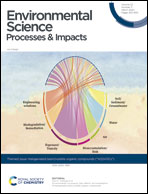Retrospective on microbial transformations of halogenated organics
Abstract
Prior to the 1960s, knowledge of biological transformations of highly halogenated aliphatic compounds was limited, except in mammalian organisms where enzymatic transformations occurred to rid the body of ingested harmful chemicals. Limited abiotic transformation of such compounds had also been observed, with half-lives varying from days to centuries. Commonly believed was that aerobic transformation might occur by cometabolism rather than to conserve energy for respiration, while anaerobic transformations were in general thought not to occur. However, in the late 1960s anaerobic transformation of chlorinated pesticides was noted, and then in the early 1980s, partial microbial dehalogenation of chlorinated solvents such as tetrachlorethene, trichloroethene, trichlorethane, and carbon tetrachloride was also found to occur. With only partial dechlorination, complete detoxification was not achieved. And at the time, dehalogenation reactions were not believed to yield energy for growth to the degrading microorganisms. However, in the 1990s bacteria began to be found that obtain energy from anaerobic transformations, often enabling complete dechlorination and detoxification. Since then such ability has been found among several bacterial species, many of which use molecular hydrogen as a donor substrate and halogenated organics as electron acceptors, thus conserving energy through reductive dehalogenation. Growth of knowledge in this field has grown rapidly since the 1960s. Broad usages of such microorganisms are now underway to rid contaminated groundwater of hazardous halogenated chemicals.

- This article is part of the themed collection: Halogenated (semi)volatile organic compounds (“X(S)VOCs”)


 Please wait while we load your content...
Please wait while we load your content...